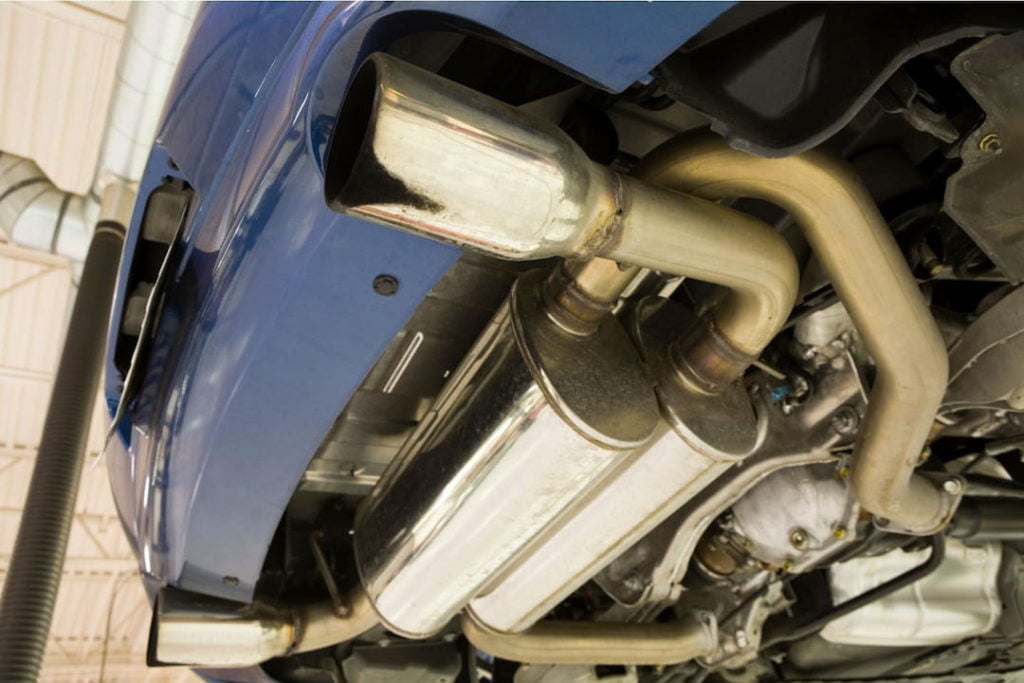Welding is a powerful tool to complete a variety of projects and repairs. From structural steel beams to sheet metal fabrication--welders have numerous opportunities to show off their skills.
Table of Contents
But if you're relatively new to the craft, welding an exhaust pipe can be one of the most intimidating tasks for beginners. The material used in exhaust pipes requires practice and skill to achieve strong and effective welds, and a good stick welder.
However, with patience and the right technique, any welder should be able to make it through this process with little trouble but following safety procedures and using a reliable welding helmet during the process.
In this post, we'll go through an explanation on how to weld an exhaust pipe and look at several tips that will ensure you have a successful experience tackling an exhaust pipe job.
Key Takeaways
- You can use several types of welding in order to weld an exhaust pipe such as MIG and TIG, but you cannot use a tack weld as tack welding will make the exhaust piping weaker and the final weld will not be that strong.
- A TIG welder or stick may be the best choice to weld these pipes as their process is performed in a much cleaner way than the others.
- A MIG welder is a very convenient machine for beginners.
- You should also follow some safety tips when you weld an exhaust pipe
What Tools do I Need to Weld an Exhaust Pipe?
A welder is the most basic tool you'll need for any welding job. An oxyacetylene torch or arc welders such as MIG, TIG, and Stick welders are typically used to join an exhaust pipe.
You will also want to ensure that you have the necessary safety equipment, such as protective goggles, gloves, long-sleeved shirts, and a fire-resistant welding apron.
Other tools that may be useful include wire brushes, clamps, grinding discs and steel wool to clean the pipe surface before welding.
Also, you'll need a few filler rods appropriate for your type of metal and welding process. Lastly, it's recommended that you have an exhaust fan nearby to help clear away any smoke or fumes from the welding process.
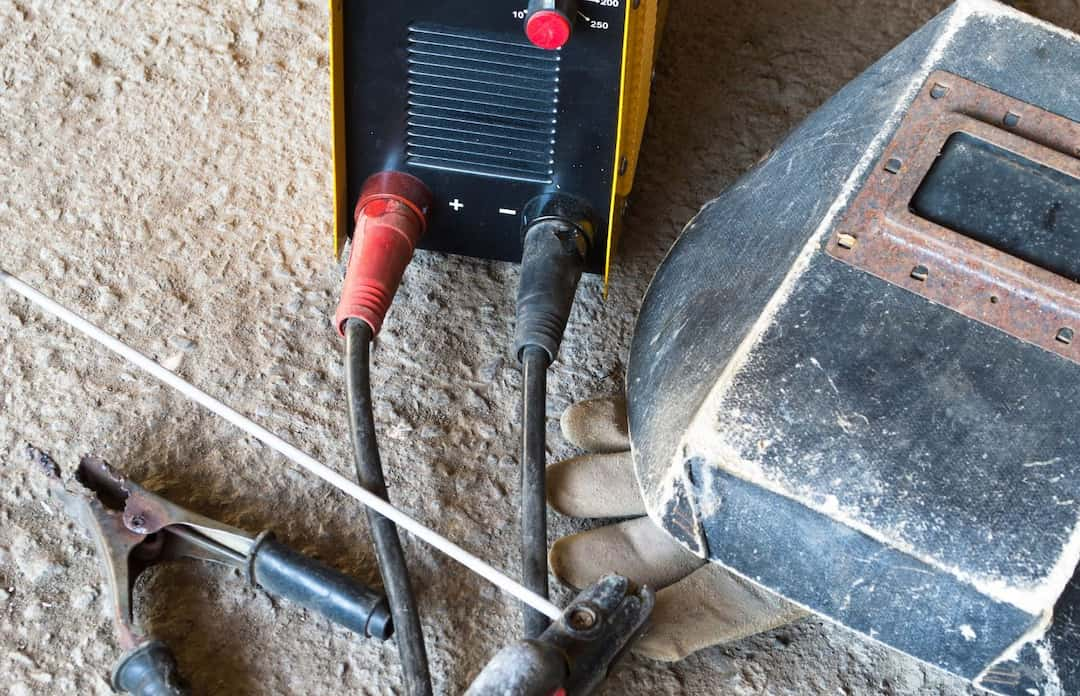
Welding An Exhaust Pipe With A Stick Welder
The Stick welder, or Shielded Metal Arc Welder (SMAW), is the most common welding machine used for exhaust pipe repairs.
It’s relatively user-friendly and easy to operate; however, it does require some practice with proper technique to achieve a strong weld. Here are the steps you should take when welding broken exhaust pipe with a stick welder:
1. Choosing the Right Rod for Welding
Stick welding rods come in various sizes and types. Choose a rod that is compatible with the material of your pipe; for example, if you are welding an aluminum pipe choose an aluminum-specific rod.
2. Cut the Pipe
Cut the exhaust piping to the desired length using a cutting torch or other tool. Make sure that you have at least 2 inches of overlap for a successful weld.
3. Clean and Prepare the Pipe Surface
Use wire brushes, steel wool, or grinding discs to clean off any rust or debris from the pipe surface where welding will take place. This will help ensure a better weld.
4. Clamp the Pipe and Begin Welding
Securely clamp the pipe in place, making sure that it is properly aligned for welding. Hold your electrode at a 45-degree angle from the pipe surface and move along the length of the joint. Keep an eye on your weld pool, and adjust the amperage as needed to maintain a consistent size.
5. Allow the Pipe to Cool
Once you’ve completed your welds, allow the pipe to cool before moving it or removing the clamps. This will help ensure your weld joint is secure and free of stress fractures.
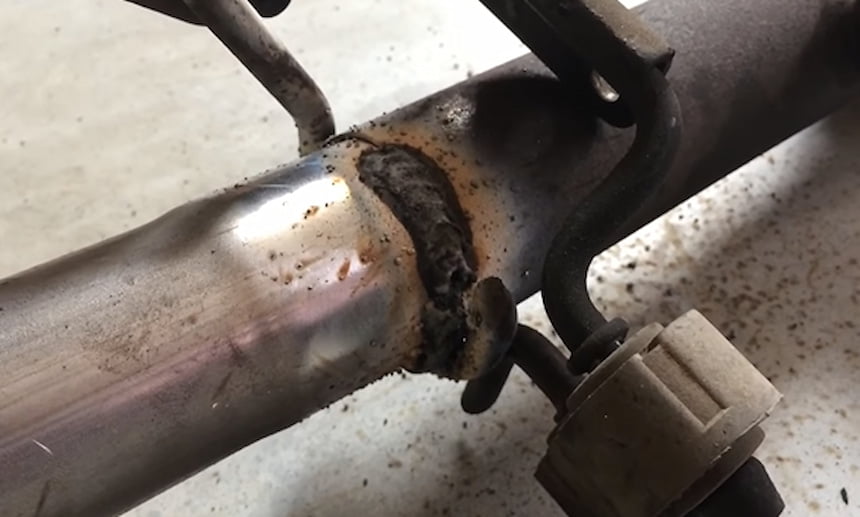
Advantages of Using Stick Welders
The first advantage is that stick welder machines are relatively inexpensive in comparison to other types of welding equipment. This makes them a great choice for hobbyists and those just starting out in welding. They are also easy to use and operate, so even beginners can get the hang of it quickly, as opposed to tack welding process.
The second advantage is that stick welders work well with almost any type of metal including aluminum, stainless steel, mild steel, cast iron and more. This makes them a very versatile tool and ensures that you can use a stick welder for multiple projects.
Using MIG Welding to Weld an Exhaust Pipe
MIG welding is a popular choice for exhaust pipe projects because of its convenience and ease of use. The process requires you to feed metal wire into the weld at a steady rate as it melts and fuses with the base material. Here are the steps you'll need to take when welding a pipe with a MIG welder:
1. Clean the surface of your pipes
Use a wire brush, steel wool and grinding discs to remove rust or scale from the weld joints. Make sure that both surfaces are clean and debris-free before you start to weld.
2. Set up your welding machine
Ensure that the wire speed, current and voltage are set to the manufacturer's recommended settings for your type of metal and don't forget your welding helmet.
3. Run a bead on each side of the joint
Start from one side and slowly move in an overlapping pattern until you reach the other edge. Make sure that you keep a steady hand and maintain a consistent speed.
4. Allow the welds to cool before handling
Be sure to give your welds plenty of time to cool down fully before moving them or working on them further.
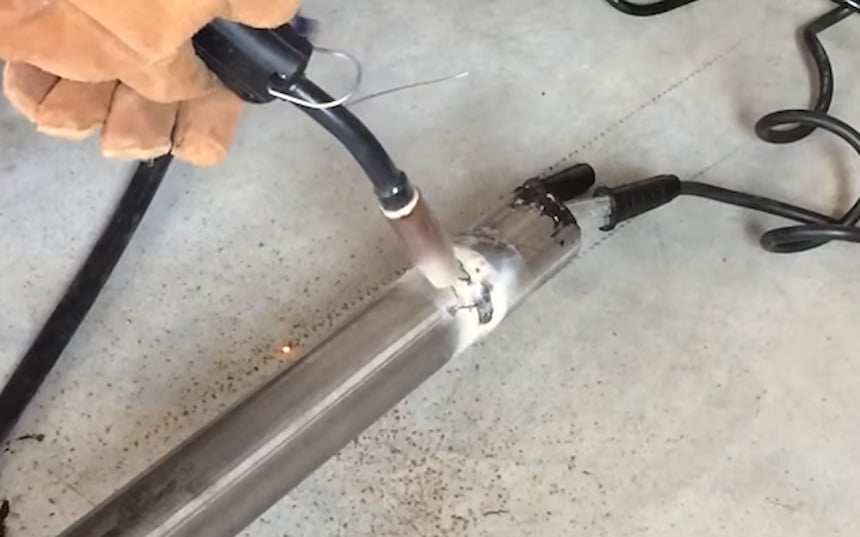
Advantages of Using MIG Weld
MIG welders offer a number of advantages over other welding processes. They are easy to use, require little setup time and produce consistent high-strength welds.
MIG welders can be used on both thin and thick materials with minimal heat input required. This makes them ideal for exhaust systems since they can easily handle the delicate metal used in these parts.
The process can be done with either short or long welds and both sides of the joint can be welded at once.
Safety Tips for Welding the Exhaust Pipe
1. Wear the appropriate safety equipment for welding pipes, including eye protection, a face shield and heavy leather gloves.
2. Make sure your workspace is well-ventilated with plenty of fresh air to minimize the risk of inhaling poisonous fumes from welding pipes.
3. Use a respirator while welding to reduce inhalation of toxic exhaust fumes.
4. Be aware of the dangers associated with high temperatures and sparks when welding exhaust pipes, so keep a fire extinguisher nearby.
5. Ensure your tools are in good condition before welding on pipes.
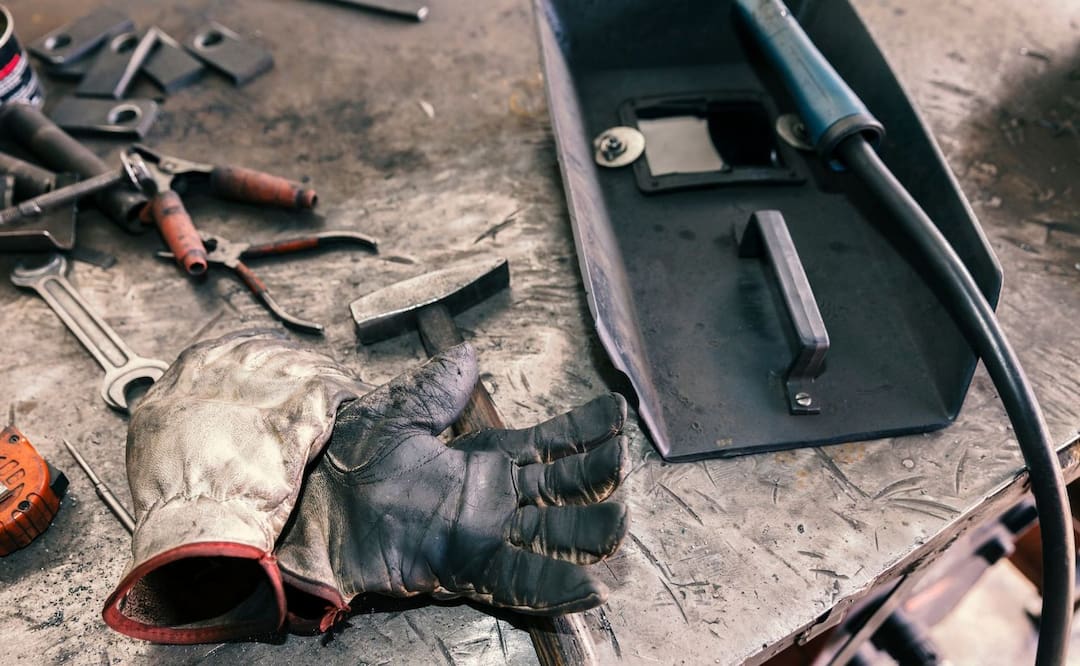
FAQs Related to Welding an Exhaust Pipe
What wire do you use to weld an exhaust pipe?
The type of wire you need to use in welding an exhaust pipe will depend on the metal used. Generally, mild steel exhaust pipes can be welded with a flux-cored or MIG wire.
For stainless steel exhaust pipes, it is recommended to use TIG welding with a 309L or 312 stainless steel filler rod.
Is it OK to weld an exhaust pipe?
Yes, it is common practice to weld an exhaust pipe. You do need to be sure that you have the right material and skill level as mistakes can cause serious damage. It is also important to use proper ventilation when welding due to fumes created during the process.
What can I use to weld my exhaust pipe?
You can use a variety of welding materials and tools to weld your exhaust pipe including:
- MIG welding
- TIG welding
- Oxyacetylene welding.
Each type of welding has its own advantages and disadvantages, so make sure to research which one is best for your particular project before beginning.
